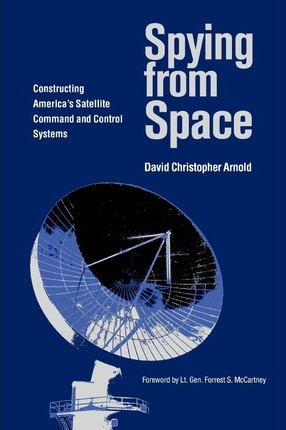Spying from Space: Constructing America's Satellite Command and Control Systems

Spying from Space: Constructing America's Satellite Command and Control Systems
On August 14, 1960, a revolution quietly occurred in the reconnaissance capabilities of America. When the Air Force C-119 Flying Boxcar Pelican 9 caught a bucket returning from space with film from a satellite, the American intelligence community gained access to previously denied information about the Soviet Union. The Corona reconnaissance satellite missions that followed lifted the veil of secrecy from the communist bloc, revealing, among other things, that no "Missile Gap" existed. This revolution in military intelligence could not have occurred without the development of the command and control systems that made the Space Race possible. In Spying from Space, David Christopher Arnold tells the story of how military officers and civilian contractors built the Air Force Satellite Control Facility (AFSCF) to support the National Reconnaissance Program. The AFSCF also had a unique relationship with the National Reconnaissance Office, a secret organization that the U.S. government officially concealed as late as the 1990s. Like every large technology system, the AFSCF evolved as a result of the interaction of human beings with technology and with each other. Spying from Space fills a gap in space history by telling the story of the command and control systems that made rockets and satellites useful. Those interested in space flight or intelligence efforts will benefit from this revealing look into a little-known aspect of American achievement. Those fascinated by how large, complex organizations work will also find this an intriguing study of inter-service rivalries and clashes between military and civilian cultures.
PRP: 132.27 Lei
Acesta este Pretul Recomandat de Producator. Pretul de vanzare al produsului este afisat mai jos.
119.04Lei
119.04Lei
132.27 LeiIndisponibil
Descrierea produsului
On August 14, 1960, a revolution quietly occurred in the reconnaissance capabilities of America. When the Air Force C-119 Flying Boxcar Pelican 9 caught a bucket returning from space with film from a satellite, the American intelligence community gained access to previously denied information about the Soviet Union. The Corona reconnaissance satellite missions that followed lifted the veil of secrecy from the communist bloc, revealing, among other things, that no "Missile Gap" existed. This revolution in military intelligence could not have occurred without the development of the command and control systems that made the Space Race possible. In Spying from Space, David Christopher Arnold tells the story of how military officers and civilian contractors built the Air Force Satellite Control Facility (AFSCF) to support the National Reconnaissance Program. The AFSCF also had a unique relationship with the National Reconnaissance Office, a secret organization that the U.S. government officially concealed as late as the 1990s. Like every large technology system, the AFSCF evolved as a result of the interaction of human beings with technology and with each other. Spying from Space fills a gap in space history by telling the story of the command and control systems that made rockets and satellites useful. Those interested in space flight or intelligence efforts will benefit from this revealing look into a little-known aspect of American achievement. Those fascinated by how large, complex organizations work will also find this an intriguing study of inter-service rivalries and clashes between military and civilian cultures.
Detaliile produsului









